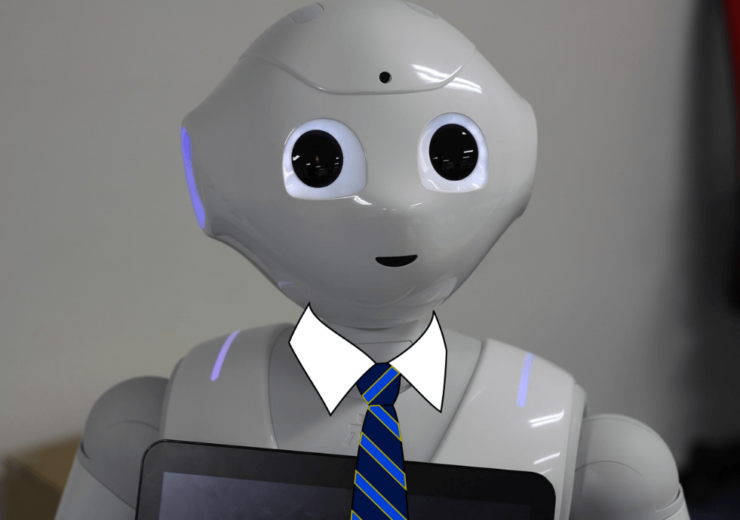Legal secretaries, retail assistants and farm workers are among the 1.5 million jobs that are most at risk of automation, according to new figures from the Office of National Statistics

The UK economy needs more robots, according to the BEIS committee (Credit: Pxhere)
Waiting staff, supermarket workers and legal secretaries are among the occupations that may soon disappear – as new analysis says 1.5 million jobs are at risk of automation.
The UK’s Office for National Statistics (ONS) found that 7.4% of 20 million jobs it analysed to be at “high risk” of being lost to technology, and also include entry-level sales roles, bar staff, farm workers and receptionists.
People who can consider their jobs to be safe are medical practitioners, higher education teaching professionals, and other high-skilled occupations.
The ONS report said: “It is not so much that robots are taking over, but that routine and repetitive tasks can be carried out more quickly and efficiently by an algorithm written by a human, or a machine designed for one specific function.
“The risk of automation tends to be higher for lower-skilled roles for this reason.”
Laura Gardiner, research director at the Resolution Foundation think-tank, added: “Fears that technology will destroy jobs are as old as time.
“And while record employment levels today suggest that fears about the jobs-killing effect of automation are overblown, it will shape and change the jobs we do.
“With the UK struggling to escape its productivity funk, there’s a strong living standards case for more automation in the economy, though we need to ensure that everyone has access to the opportunities that new technologies will bring.”
Women and under-25s most at risk of losing their jobs to automation
The robot revolution is most likely to affect women, who currently occupy 70.2% of the occupations deemed to be high-risk.
Age also plays a part in whether a job will be automated, according to the ONS.
Those aged 20 to 24 were more likely to be in jobs that are under threat of being automated than those in other age groups.

The level of risk slowly increases again as people approach retirement, with 7.7% of 60 to 65-year-olds currently in jobs that are at risk of automation.
However, all hope is not lost for these workers – ONS explained that “workers naturally obtain further skills and become more knowledgeable in their field as they progress further in their careers”.
Jobs at risk of automation by location
The risk of automation was found to vary depending on where people work and the prevalence of high-skilled roles in the area.
Oxford, Cambridge and central London are areas that the ONS predicts will be least affected by automation.
Although a recent report suggested that 31% of citizens in the UK would like to see their politicians replaced by AI, Westminster is a particular area considered to be at low risk of automation.
Areas that could be affected most by the Fourth Industrial Revolution are spread across the country and include Broadland in Norfolk, South Holland in Lincolnshire, Derwentside in County Durham and Berwick-upon-Tweed in Northumberland.
Rutland, in the East Midlands, is the area where the overall risk of automation is highest at 55.75%.
A large proportion of people in the county work in distribution (30%) and hospitality industries (16.7%) – both of which are high-risk sectors.
Changes in the labour market and the impact on job automation
The 7.4% job automation prediction for the UK has decreased slightly from the organisation’s predictions in 2011, when it stated 8.1% of jobs were at high risk.
The ONS suggests the decrease in percentage was most likely a result of changes already taking place in the labour market.
The automation of some jobs is effectively already underway, with the introduction of self-service checkouts and the development of shelf-stacking robots.

Meanwhile the proportion of jobs at low and medium-risk of automation has risen as technologies such as AI have become more sophisticated.
Many of the high-skilled vocations highlighted in the report, such as scientific research, computer programming and consultancy, have low numbers of employment.
Conversely, many of the low-skilled jobs that are most at risk of automation, have high employment figures, meaning the impact of automation on these sectors will be more keenly felt.
A similar study by the UK’s Centre for Social Justice (CSJ) think-tank in September 2018 concluded that wholesale and retail jobs were most at risk from Industry 4.0, with 2.25 million jobs considered “likely” to be replaced by automated processes.
Is my job at risk from automation? Here’s how to find out
ONS has created a chatbot to help people find out whether their job is at risk of automation.
(Credit: Office of National Statistics, The probability of automation in England: 2011 and 2017)


